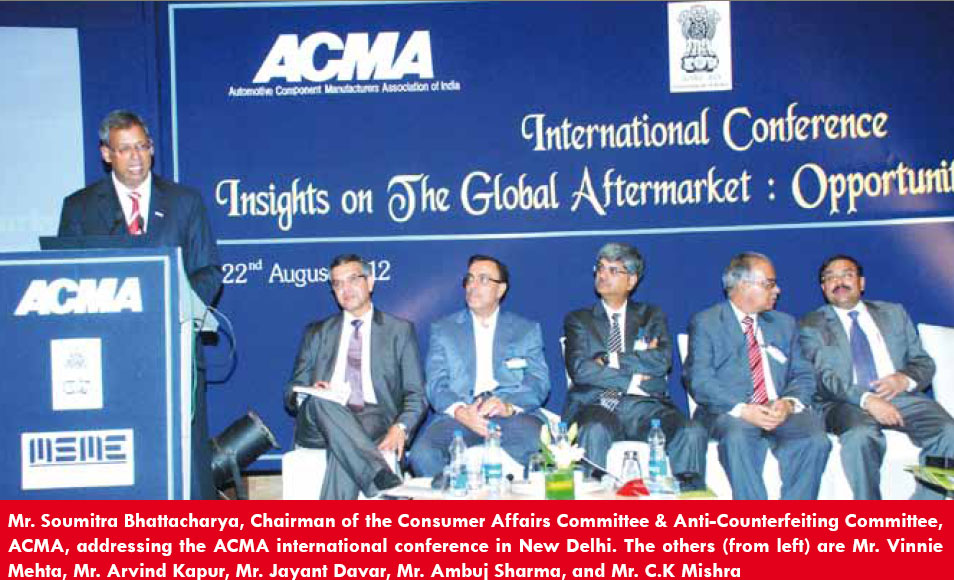 The Automotive Component Manufacturers Association of India (ACMA) recently hosted an international conference on the global automotive aftermarket in New Delhi to address growth opportunities in the current environment and the need to explore the new export dimensions.
The Automotive Component Manufacturers Association of India (ACMA) recently hosted an international conference on the global automotive aftermarket in New Delhi to address growth opportunities in the current environment and the need to explore the new export dimensions.
The global automotive market varies significantly across regions driven largely by contrasting trends in vehicle-parc growth. On the one hand, there are emerging economies with lower density of vehicles, and, on the other, traditional high income matured markets such as the US, Europe and Japan, characterized by higher per capita vehicle ownership and almost saturated with over 500 vehicles per 1,000 persons on an average.
 Speaking on the occasion, Mr. Arvind Kapur, ACMA President, observed: “The auto component industry in India has over the years, through continuous improvements, surpassed stringent international quality standards and requirements. Today almost 80 per cent of our exports are to the Global OEMs & Tier 1s, and the rest to aftermarkets. With significantly well defined and dominant aftermarkets in the US and Europe, I am confident the Indian auto component industry will focus attention on these and will carve a niche for itself.”
Speaking on the occasion, Mr. Arvind Kapur, ACMA President, observed: “The auto component industry in India has over the years, through continuous improvements, surpassed stringent international quality standards and requirements. Today almost 80 per cent of our exports are to the Global OEMs & Tier 1s, and the rest to aftermarkets. With significantly well defined and dominant aftermarkets in the US and Europe, I am confident the Indian auto component industry will focus attention on these and will carve a niche for itself.”
A concept note on opportunities and challenges in the global aftermarket tiled ‘The Automotive Aftermarket: A Bright Spot in a Sea of Change’, by Frost & Sullivan, the Knowledge Partner of the conference, was also released on the occasion.
Some of the salient points on the behaviour of mature and emerging markets highlighted in the paper included:
• The size of the global automotive aftermarket is around $400 billion. In mature automotive markets, the aftermarket generates a big slice of the profit-pie while in emerging markets the aftermarket is a minor contributor.
• Large aftermarket players, including multi-brand service and specialty chains, dominate mature markets
• In mature automotive aftermarkets strong service brands and parts brands have visible footprint, offering differentiated services and product choices to the end user. In emerging markets strong aftermarket brands, differentiated on quality-price matrix, do not exist.
• In markets like Western Europe and the US a strong regulatory mechanism ensures level playing field for all the industry players thus encouraging competition and offering many choices to the end user, whereas, the regulatory framework for aftermarket is weaker in emerging markets.
• Efficient and well-managed supply chain & logistics have contributed to aftermarket development in mature markets. On the other hand, emerging markets are yet to achieve efficiency in warehousing, transportation, inventory management and related services.
• Fake and counterfeit parts are another major challenge for aftermarket players in the emerging economies, especially China and India. Mature markets, while not entirely free from fake and counterfeit parts, are not adversely impacted by this menace to the same extent owing to legal framework, industry activism and maturing of markets.
Several eminent international speakers from South-East Asia, Europe, the US and South Africa gave detailed insights into various markets with key challenges and opportunities, key distribution channels and the emerging trends.